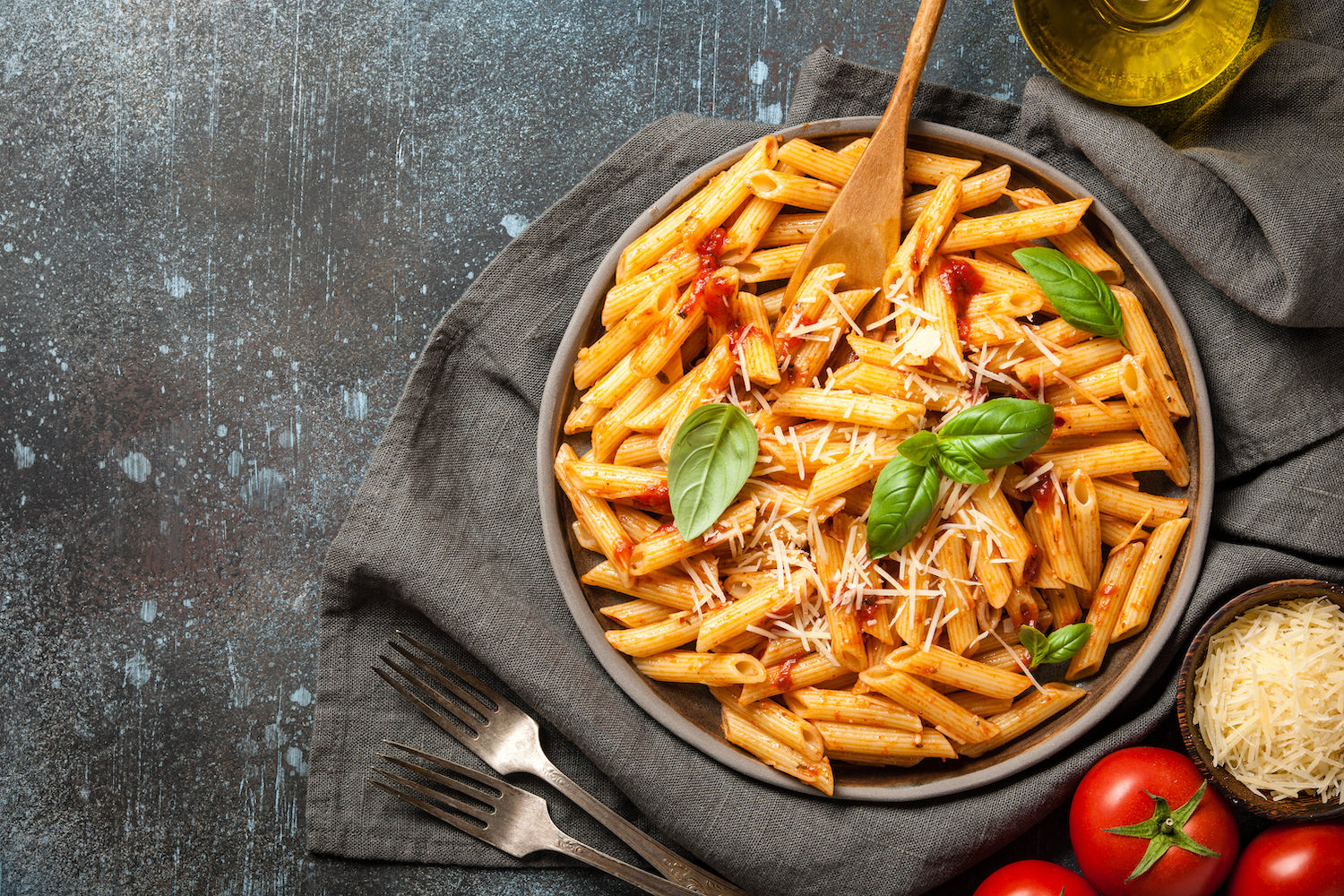Introduction: More Than Just Grated Cheese
In Italy, cheese isn’t just an afterthought. It’s part of the soul of the dish. From the salty tang of Pecorino to the buttery depth of Parmigiano Reggiano, the cheese you choose can transform your pasta from average to unforgettable.
Let’s dive into the delicious world of Italian cheeses and figure out which one belongs on your next plate of pasta.
- Parmigiano Reggiano: The King of Cheese
Parmigiano Reggiano is the superstar of hard cheeses—aged a minimum of 12 months (often more), made only in specific regions of Northern Italy, and protected by PDO status. Its nutty, salty, umami-packed flavor makes it perfect for finishing almost any pasta.
Pro tip: Buy it in wedges and grate it fresh. That powdery pre-grated stuff? Leave it on the shelf.
Best with: Bolognese, tortellini in brodo, risotto, lasagna.
- Pecorino Romano: The Bold One
Made from sheep’s milk and aged for at least 8 months, Pecorino Romano packs a salty, punchy bite that stands up beautifully to bold flavors. Think Roman classics—peppery sauces, rich guanciale, and robust tomato bases. A great suitable option for people who avoid dairy due to lactose intolerance!
Pro tip: Use it at the end of cooking pasta dishes to avoid becoming gritty.
Best with: Cacio e pepe, carbonara, amatriciana.
- Grana Padano: Parmigiano’s Cousin
Grana Padano is often compared to Parmigiano but is milder, slightly sweeter, and more affordable—great for everyday cooking without compromising on flavor. It melts well and grates easily.
Budget bonus: Aged varieties (over 16 months) bring even more complexity to the table.
Best with: Light tomato sauces, gnocchi, vegetable pastas.
- Ricotta Salata: Fresh but Firm
This cheese starts as fresh ricotta, then is pressed, salted, and aged until firm and sliceable. It’s dry, crumbly, and lightly salty—ideal for grating or crumbling over pasta.
Pro tip: Adds contrast and creaminess without making the dish heavy.
Best with: Pasta alla Norma, spring vegetable pastas, light tomato sauces.
Cheese is a key ingredient that brings depth and authenticity to your dish

- Mozzarella & Burrata: Melty, Creamy Magic
While you wouldn’t normally grate mozzarella over hot pasta, fresh mozzarella (or better, burrata) brings creaminess and melt-factor to baked dishes or chilled pasta salads. And yes—burrata + pesto or tomatoes = dream team.
Pro tip: Tear it, don’t slice it—for that rustic, oozy finish.
Best with: Oven baked pasta, baked ziti, or as a topping for pesto pasta or juicy sweet tomatoes.
- Taleggio & Gorgonzola: For the Bold and Brave
Best with: Cream sauces, gnocchi, walnut pasta
Feeling fancy? Taleggio (a soft, washed-rind cheese) and Gorgonzola (Italy’s blue cheese beauty) are rich, funky, and made for creamy sauces or autumn-inspired dishes. Use sparingly—they’re strong, but oh-so-satisfying.
Try this: Gorgonzola + walnuts + rigatoni. One of the best pasta combo.
Best with: Cream sauces, gnocchi, walnut pasta.
How to Match Cheese and Pasta Like a Pro: Here’s a quick guide to help you master the pairing:
| Pasta Type | Best Cheese |
| Rich, meaty sauces | Parmigiano Reggiano, Grana Padano |
| Spicy/tomato sauces | Pecorino Romano |
| Cream-based sauces | Taleggio, Gorgonzola, Asiago |
| Veggie/light sauces | Ricotta Salata, Mozzarella |
| Pesto-based | Parmigiano, Pecorino, Burrata (garnish) |
| Seafood pasta | No cheese (or just a touch of grated zest!) |
Cheese isn’t just the final flourish on your pasta—it’s a key ingredient that brings depth, richness, and authenticity to your dish. By choosing the right cheese, you’re not just cooking—you’re honoring centuries of Italian culinary tradition.
So whether you’re grating Parmigiano over tagliatelle or crumbling ricotta salata on your pasta, remember: the right cheese makes all the difference.
 FiorFiore USA
FiorFiore USA